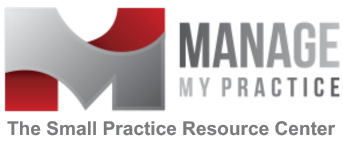Update: We have moved the session up one week! Please note the new date!
With registrations piling up we are moving the Credit Card on File Webinar up to Tuesday, March 5th at 1 p.m. EST. If you want to improve your practice’s cashflow in just one hour sign up now as seats are going fast!
We had such a great response to our Credit Card on File Webinars that we are running another session, in addition to the Revenue Cycle Management Series that will start next month. We hope you will join us! Click here to register!
How to Cut Your Medical Practice’s A/R and Collection Costs in Just 60 Minutes.
We know patients are bearing more of the financial burden for healthcare, particularly in the form of High Deductible Health Plans (HDHPs), so it falls to the provider to collect the deductibles. How can you collect deductibles, co-pays and co-insurance, as well as electronically manage patient payment plans while reducing the associated labor and resource expense? Register for the Manage My Practice webinar that teaches you everything you need to know to spend less and collect more at time of service by implementing a Credit Card on File Program in your practice.
What is a Credit Card on File Program?
A Credit Card on File (CCOF) Program facilitates the collection of a credit or debit card from each patient and requires this card to be used for co-pays, co-insurance and deductibles. You have the option of collecting an estimate of what is due at time of service, and/or charging the credit card when the payer pays the claim.
What are the benefits of a Credit Card on File Program?
- Reduced days in accounts receivable.
- Improved cash flow.
- Elimination of statements.
- Electronic management of payment plans.
- Elimination of bounced checks.
- Elimination of the manual refund process and refund check expense.
- Reduced labor in daily reconciliation process.
- Elimination of cash drawers and change issues.
- Reduction or elimination of deposits.
- Facilitate faster check-in and check-out.
- Elimination of paper receipts.
- Elimination of collections expense.
This one-hour webcourse with accompanying materials is an incredible value at $59.95
What will I learn if I take this webinar?
1. Understand how a credit card on file program differs from traditional payment options offered by practices.
2. Learn the terminology and protocols of credit card processing – it’s not as mysterious as it seems!
3. Compare credit card processing fees and choose a vendor based on an informed analysis.
4. Utilize handouts to train staff and educate patients on the credit card on file program.
5. Successfully implement a credit card on file program.
What does the program include?
Purchase of this program for only $59.95 includes the live webinar, slide handouts, and a complete Action Pack of forms and templates in Word, including:
1. Worksheet for Credit Card on File Program Return on Investment (ROI)
2. Staff Script & Role Playing Suggestions for Staff Training
3. Sample Security Policy to Comply With PCI Guidelines
4. Credit Card on File Program Timeline Worksheet
5. Credit Card Program Comparison Worksheet
6. Patient Handout #1: Information About Our Credit Card on File Program & Discontinuation of Statements
7. Patient Handout #2: What is a Deductible and How Does It Affect Me?
8. Sample Patient Agreement for the Credit Card on File Program
Register Now!
- March 5, 2013 at 1:00 p.m. Eastern/ 12:00 p.m. Central/
11:00 a.m. Mountain/ 10:00 a.m. Pacific – Click here to register!


